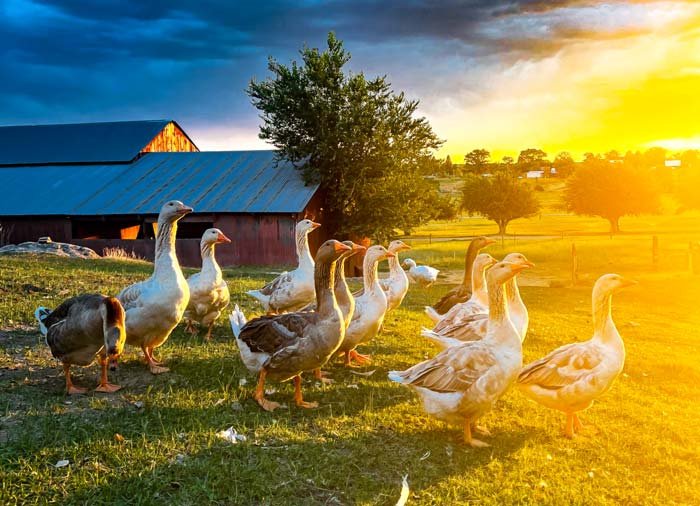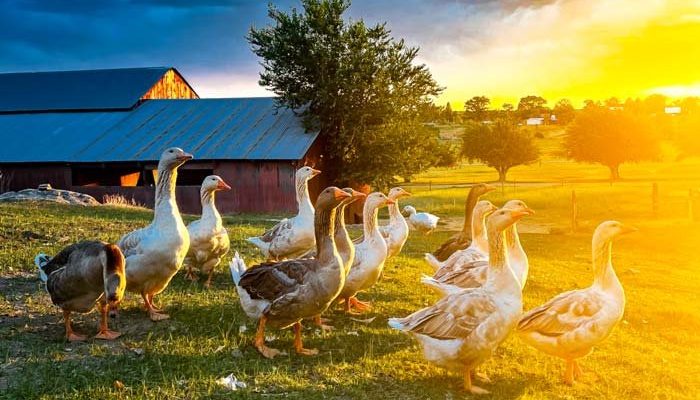
When it comes to integrating new geese, patience is key. It’s essential to understand their social structure, which can be quite complex. Think of it as a delicate dance, where timing and familiarity play crucial roles. Whether you’re expanding your farm or simply wanting to diversify your flock, let’s dive into the steps that can make this introduction successful.
Understanding Goose Social Behavior
Before you even think about adding new geese, it’s crucial to understand how geese interact with one another. These birds are naturally social creatures, forming strong bonds with their flock members. They communicate through a series of honks and body language, displaying everything from excitement to aggression.
In a typical flock, the pecking order is very important. This hierarchy determines who gets access to food, who takes the lead during migration, and even who gets the best nesting spots. When you introduce new geese, they might disrupt this order, and existing geese can become territorial. Picture it like a family reunion where a bunch of cousins suddenly show up—there might be some initial awkwardness as everyone tries to figure out their place.
To make this social transition smoother, it’s wise to observe your existing flock’s dynamics. Take note of who the leaders are, who gets along well, and who tends to be a bit of a bully. This understanding will guide your approach as you introduce newcomers.
Preparation Before the Introduction
Getting ready to introduce new geese is just as important as the introduction itself. First, you’ll want to set up a separate space for the new geese before they meet the old flock. This space should be visible to the existing geese, but separated. You want the old crew to see the newcomers but not interact just yet.
During this period, allow the new geese to get comfortable in their new environment. This can take a few days to a week. Make sure they have access to food, water, and shelter. Meanwhile, let your existing flock observe them. This will help reduce anxiety later on, as they’ll be familiar with the newcomers’ presence.
You might find it helpful to mix up the feeding times of both flocks. Feeding the new geese at the same time as the existing flock allows them to see each other and even share some space without direct contact. This can lessen the tension and foster a sense of curiosity rather than fear.
Gradual Introduction Techniques
When you feel that both groups are ready, it’s time to start introducing the new geese. One effective way is to use fencing or barriers for the first few interactions. This allows both groups to get a closer look at each other without the risk of aggressive behavior.
You could start with short sessions where they can see each other but remain separated by a fence. Gradually increase the time they spend together over a few days or even weeks. If any aggressive behavior occurs, it’s a signal to slow down the process. Ideally, you want to create a calm and positive atmosphere during these introductions.
Also, consider introducing new geese during feeding time or when they are preening—activities that engage their focus can ease tensions. If they’re distracted by food or grooming, they may be less likely to engage in aggressive behaviors.
Monitoring Behavior and Adjusting as Needed
Once the geese are finally interacting without barriers, your observation skills will come into play. Keep a close eye on how they behave with one another. You’ll want to spot any signs of distress or aggression. For instance, if you notice one goose chasing another excessively or if there’s constant honking, it may be time to step in.
If you see a problem, don’t panic! It’s okay to separate the new geese again and allow them some more time to adjust. You might consider leaving them separate for a few more days before trying again.
Try to look for signs of friendliness too, like preening each other or sitting close together. These moments can indicate that they’re starting to accept one another. Over time, as long as they’re beginning to form bonds, you’ll find that the flock will settle down and establish a new order that includes everyone.
Creating Shared Spaces
Once your geese have successfully integrated, you’ll want to make sure they share common spaces comfortably. This involves ensuring they all have access to food and water without crowding or fighting. Consider having multiple feeding stations to decrease competition.
When it comes to nesting areas, you might want to create multiple options. This ensures that each goose can find a space they feel safe and secure in. By providing choices, you reduce the likelihood of disputes.
Remember that your role doesn’t end after introductions. Keep engaging with your geese. Spend time watching their interactions and maintaining a peaceful environment. A little bit of attention can go a long way in keeping your flock happy and harmonious.
Potential Problems and Solutions
Even with the best-laid plans, you might encounter some hiccups during the integration process. Common problems include pecking, bullying, or absolute refusal to accept the new geese. But don’t worry; solutions are often at hand.
If you notice persistent bullying, consider removing the bully temporarily. This doesn’t mean you have to get rid of them altogether; a little timeout can sometimes help reset their behavior. Similarly, if a new goose is particularly aggressive, it may benefit from a break.
If the flock is refusing to accept the newcomers, it might be an opportunity to re-evaluate their initial interactions. Go back to the fencing method and allow more time for observation and gradual introductions. Sometimes, patience truly is the best approach.
Integrating new geese into an existing flock can be a rewarding experience, but it requires thoughtful planning and a lot of patience. By understanding their behavior, preparing adequately, and monitoring their interactions, you can create a harmonious environment where everyone gets along.
Remember, every flock is unique, so take your time to observe and adapt as needed. Before long, your new geese will be just as much a part of the family as your original flock. Enjoy the process and the renewed energy a bigger flock can bring!

